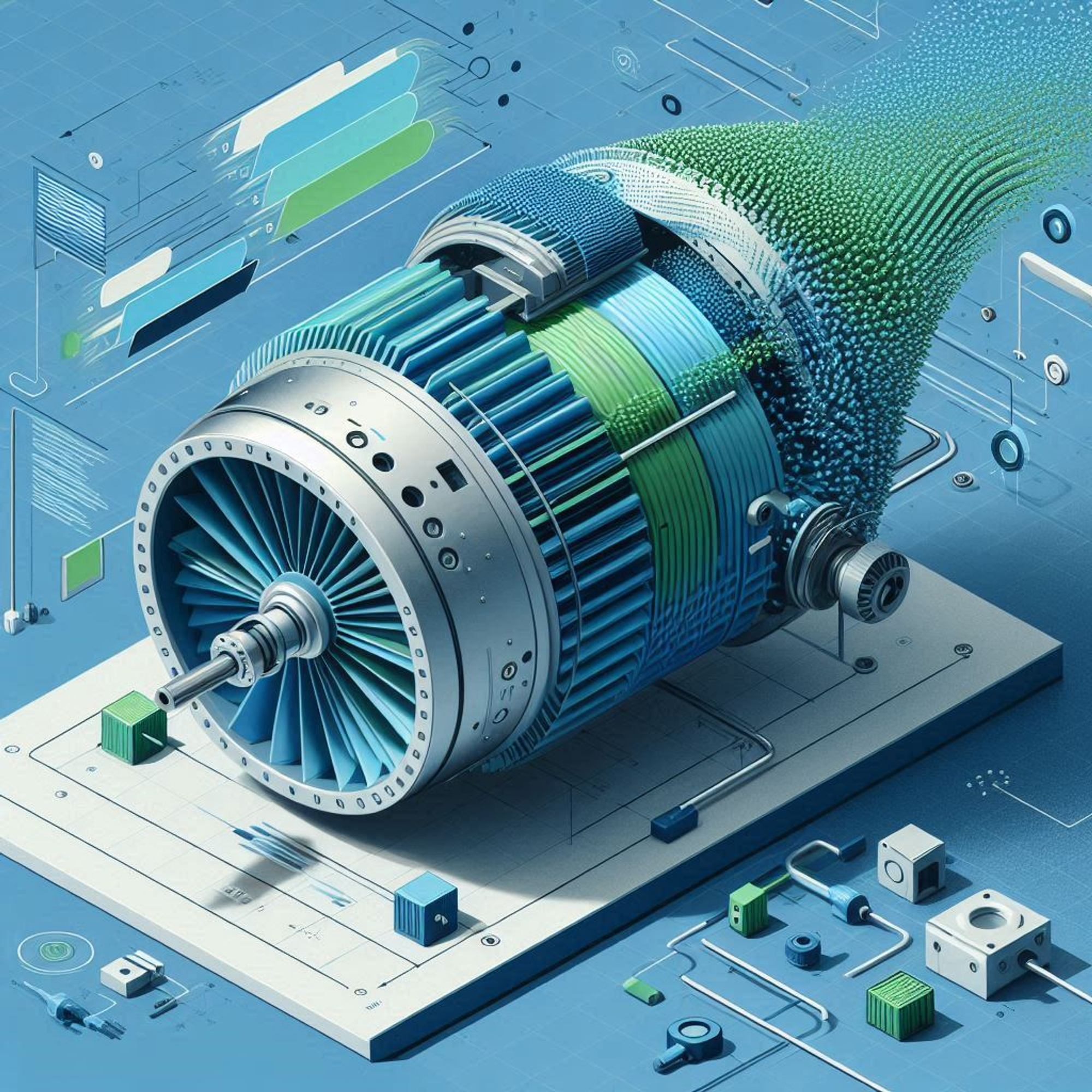Unleashing the Potential: How Particleworks CFD Cracked the E-Motor Cooling Challenge
As electric vehicle adoption accelerates, designing compact yet powerful traction motors with effective cooling is crucial. Traditional CFD tools can struggle with the complex multiphase flows involved, like oil impinging on windings. However, a cutting-edge particle-based approach enabled engineers to optimize an oil-cooled e-motor design through efficient simulation.
Key takeaways
- Particle-Based CFD Efficiently Simulates Complex Multiphase E-Motor Cooling Flows
- CFD Modeling Revealed Flow Split Ratios and Jet Impingement Patterns for Optimal Cooling
- Coupled CFD-FEA Workflow Validated Temperatures Within ±2.8°C of Experiments
Particle-based CFD (Computational Fluid Dynamics) techniques like MPS can model complicated multiphase interactions more efficiently than traditional volume-based CFD, reducing computational costs. The e-motor geometry featured a central shaft feeding cooling oil outwards through strategically placed jets aimed at the stator windings and end regions. To evaluate this configuration, the analysis followed an innovative workflow harnessing Particleworks' unique multiphase modeling capabilities.
Quantifying the Flow Patterns for Maximum Cooling
First, an internal flow simulation mapped the flow split between the three jet groups,
revealing a 47/34/19 percent distribution ratio. This oil flow field then informed a follow-on
air flow simulation using larger 0.5mm particles - about 16 times fewer than a full two-phase
model.
With the air flow mapped, a final high-resolution 0.2mm particle simulation captured the
complex oil jet impingement patterns and intricate cooling of the motor components.
Localized high-velocity oil jets could be visualized impacting the stator windings. The
distribution of the heat transfer coefficient (HTC) over the motor surfaces was also
extracted.
This comprehensive multiphase flow insight allowed the team to verify the cooling design
meets performance targets. All while leveraging Particleworks' efficiency advantages - the
oil flow simulation required just 6 days on a single GPU despite modeling millions of
particles.

Accurate Motor Temperatures Through Coupled Simulation
To predict the motor's actual operating temperatures, the CFD results were coupled with finite element heat transfer analysis in a customer proprietary FEA (Finite Element Analysis) solver. The oil flow HTC data was mapped onto the FE model, with adjustments to account for winding insulation properties. When compared against experimental measurements at six winding locations, the coupled simulation predictions matched within ±2.8°C across all points - an exceptional level of accuracy. This tight correlation validates the CFD-FEA workflow as a virtual tool for designing thermally-optimized e-motor systems earlier in the development cycle.
As e-mobility ramps up, cutting-edge industrial software like Particleworks will be indispensable for tackling tough thermal challenges. The ability to realistically simulate complicated multiphase applications unlocks the innovations needed for next-generation electric vehicle performance and efficiency. Particle-based CFD is an increasingly powerful vehicle for driving sustainable mobility solutions.
If you are interested in deepening the topic, read this article.
Particleworks blog
Enjoy our latest blog articles!
We will go over some of the simulation practices from the mesh-less solver and from the intuitive interface, that make the simulation process simple and fast.
Glossary
Take a look at the glossary dedicated to the terms of Moving Particle Simulation.







